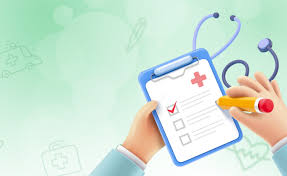
中小学心理健康教育培训心得体会 儿童心理疏导五步法
作者:中华健康网 时间:2023-05-31 00:45 阅读:9389
中小学心理健康教育培训心得体会 儿童心理疏导五步法
作为一名中小学心理教育工作者,我时常接触到许多学生在成长中遇到的各种情绪问题。为了更好地帮助学生解决这些问题,我参加了一场中小学心理健康教育培训,并学习了儿童心理疏导五步法。以下是我对本次培训和学习的体会。
一、了解现代青少年的心理健康状况
在培训课程中,我们了解了现代青少年心理健康状况的现状,以及各种心理问题所可能导致的危害。我们认识到随着社会的不断进步,青少年的生活压力越来越大,学校和家庭对他们的期望也越来越高,导致许多不良情绪的产生,如焦虑、抑郁等。在这种情况下,开展中小学心理健康教育显得尤为重要,可以帮助孩子们更好地适应生活,增强心理韧性,养成健康的心态。
二、认识儿童心理疏导五步法
在培训中,我们了解了儿童心理疏导五步法。这是一种非常实用的方法,可以帮助老师和家长更好地解决孩子们在成长中遇到的各种情绪问题。它的五个步骤分别是:关注、询问、理解、引导和反思。在实际操作中,我们可以用这种方法来解决孩子们遇到的各种情绪问题,如情绪失控、行为异常等。
三、实践操作及体会
在培训课程中,我们还进行了模拟操作,深入理解了儿童心理疏导五步法的实用性。在实际操作中,我发现该方法能够真正帮助孩子们更好地解决心理问题,使他们在情绪问题面前更有信心,更坚强。
四、需要注意的问题
虽然中小学心理健康教育是非常重要的,但在实际操作中也需要注意一些问题。需要充分了解孩子的心理需求和心理问题,了解孩子的真实情况。需要制定切实可行的教育计划,并实时反馈孩子们的进展,及时调整和改进。
五、总结
中小学心理健康教育是非常重要和必要的,需要借助一些工具和方法,如儿童心理疏导五步法等,来更好地解决孩子们在成长中遇到的各种各样的情绪问题。在实践中,我们也需要注意问题,充分了解孩子们的真实情况,制定切实可行的教育计划,以更好地帮助他们解决问题,成为更加快乐和健康的人。六、建议
在中小学心理健康教育中,除了儿童心理疏导技巧,还有很多其他需要掌握和遵循的方面。以下是一些建议,希望能够对中小学心理健康教育工作有所帮助:
1.关注学生的情况:在日常教学和活动中,教师应注意关注学生的情况,发现学生心理问题及时进行沟通和疏导。
2.关注学生的自尊心:学生的发展离不开自尊心的支持,教师应保护和鼓励学生的自尊心,不轻易批判和伤害学生。
3.注重自我修养:教师作为学生的引路人,需要先行示范,增强自己的心理素质及专业技能。
4.全校合作:学校应在心理健康教育工作中形成合力,加强各类资源的整合和共享,构建全员参与、全校共同推进的课程,健康成长。
七、结语
针对现代社会中不可回避的青少年心理健康问题,中小学心理健康教育开展显得至关重要。我们可以通过不断学习和实践,共同提高青少年心理健康的水平,创造更加美好的学习和生活环境。同时,还要呼吁家庭和社会各界加入到教育工作中,共同为青少年心理健康,以及社会的美好未来贡献自己的力量。八、英文版
Experience and Reflections on Training for Mental Health Education in Primary and Secondary Schools: Five Steps for Children's Psychological Counseling
As a mental health education worker for primary and secondary schools, I often deal with various emotional problems that students encounter during their growth. To help students better tackle these issues, I participated in a training program for mental health education in primary and secondary schools and learned the five steps for children's psychological counseling. The following is my experience and reflections on this training.
1. Understanding the Mental Health Status of Modern Teenagers
In the training course, we learned about the current mental health status of modern teenagers and the potential harm that various psychological problems may cause. We realized that as society progresses, teenagers face more and more pressure in their lives, and schools and families have higher expectations for them, leading to many negative emotions such as anxiety and depression. In this context, it is particularly important to conduct mental health education in primary and secondary schools, which can help children better adapt to life, enhance their psychological resilience, and develop healthy attitudes.
2. Understanding the Five Steps for Children's Psychological Counseling
In the training course, we also learned about the five steps for children's psychological counseling. This is a very practical method that can help teachers and parents better solve various emotional problems that children encounter during their growth. The five steps are attention, inquiry, understanding, guidance, and reflection. In practical use, we can apply this method to solve various emotional problems that children face, such as emotional outbursts and abnormal behavior.
3. Practical Experience and Reflections
In the training, we also conducted simulation exercises to deepen our understanding and practical application of the five steps for children’s psychological counseling. Through practical application, I found that this method can truly help children better solve their psychological problems, make them more confident and resilient in the face of emotional issues.
4. Issues to Be Aware of
Although mental health education in primary and secondary schools is essential and necessary, some issues also need attention in practical operation. First, it is necessary to fully understand the psychological needs and issues of children and learn their true situation. Secondly, it is necessary to develop feasible education plans, provide real-time feedback on the progress of children, and make timely adjustments and improvements.
5. Conclusion
In conclusion, mental health education in primary and secondary schools is essential and necessary. We need to use some tools and methods, such as the five steps for children's psychological counseling, to better solve various emotional problems that children encounter during their growth. In practice, we also need to pay attention to the issues, fully understand the true situation of children, develop feasible education plans, and help them solve problems to become happier and healthier individuals.
6. Suggestions
In addition to the five steps for children's psychological counseling, there are many other aspects that need to be mastered and followed in mental health education for primary and secondary schools. Here are some suggestions that may help:
1. Pay attention to students' situations: In daily teaching and activities, teachers should pay attention to students' situations, identify their psychological problems and provide timely communication and counseling.
2. Focus on students' self-esteem: Students' development depends on the support of self-esteem. Teachers should protect and encourage students' self-esteem while avoiding criticizing or hurting them easily.
3. Emphasize self-cultivation: As guides for students, teachers need to set an example, enhance their psychological quality and professional skills.
4. Cooperation throughout the school: Schools should work together, strengthen the integration and sharing of various resources, and establish a course that encourages all staff members to participate and promotes healthy growth throughout the school.
7. Conclusion
To cope with the unavoidable emotional problems that teenagers face in modern society, mental health education in primary and secondary schools is essential and necessary. We can jointly improve the mental health of teenagers through continuous learning and practice, creating a better learning and living environment. At the same time, we also call on families and all sectors of society to join in education and contribute to the mental health of teenagers and the bright future of society.




